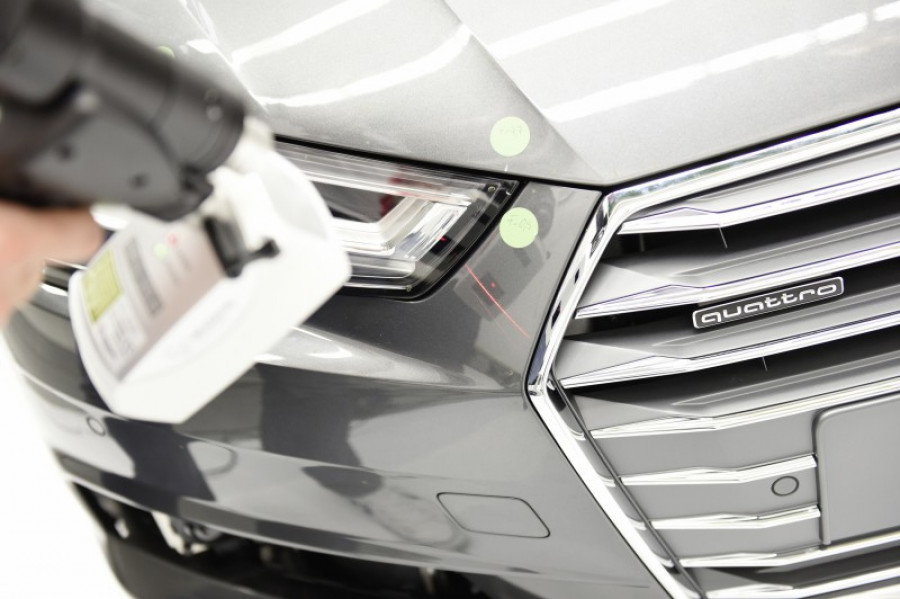ENGLISH - Roadmap for measuring manufacturing output through to 2025

Every industry, and the automotive sector is no exception, is moving towards a manufacturing model capable of making innovative products cost-effectively and sustainably. Under this technology-based approach, firms need to manage ever-growing volumes of information and to take measurements at ever-faster speeds, doing so both offline in metrology rooms and — increasingly commonly — in production environments.
Euramet, the European Association of National Metrology Institutes (of which Spanish metrology centre CEM is a member), has drawn up a roadmap through to 2025 outlining use of dimensional metrology in combination with latest-generation manufacturing technologies. Over that period, it envisages further development of short-range measuring instruments in industrial environments and predicts growing implementation of instruments capable of measuring lengths of up to 20 metres, also in production settings.
The way this discipline evolves over the next few years will be determined by several parameters. These include universal uncertainty assessment, development of advanced traceability methodologies applied to in-process metrology, online validation and dynamic measurement.
Head of the Length Unit at the CEM, Emilio Prieto, mentions some of the key factors driving development of dimensional metrology integrated with advanced manufacturing technologies. “We are seeing new generations of measuring sensors and instruments — like x-rays, micro and macro CT and so on — that offer faster measuring velocity at lower costs.” As well as mentioning interferometers and laser trackers with refraction index correction, Mr Prieto highlights the significance of other sensor types and “of using the full radiation spectrum (radar sensors).”
Mr Prieto remarks that dimensional metrology will be characterised by “use of huge data volumes to maximise characterisation of the measurement target. Those volumes are needed to assess the quality of complex products and determine their functional properties with greater precision.” The CEM executive says that the volume of data handled will reach 1012 by 2025, which will require much more powerful networked computers and ICTs developed specifically to work in the cloud.
He adds, “Firms will work with big data and complex 3D geometries and will use software certification based on data templates, with online validation, to compare results from different sources.”
In this new scenario, Mr Prieto believes, “3D metrology will be indispensable to manufacturing. Complex geometries, lower tolerances and 100% in-process inspection all require new measuring technologies that deliver more information, more quickly and more accurately and that are an integrated part of the production process. Two parameters that will become increasingly important in the field of 3D metrology will be Geometric Product Specification (GPS) and measurement uncertainty, which is essential to assessing conformity with specified tolerances.”
Impact of errors
In this future scenario, the head of the CEM’s Length Unit believes that it will be vital to “enhance understanding of the sources that generate errors. Their impact on measuring will need to be quantified and estimated.” At the same time, and despite ever-improving technology, Mr Prieto states, “It will still be difficult to evaluate measurement uncertainty and establish traceability in the latest instruments.” He adds, “In a growing instrumentation market, industries like the automotive sector will move nearer and nearer to zero defects based on in-process measuring and online manufacturing readjustments.”
According to the CEM representative, one of the technologies likely to play a greater role in the automotive industry in coming years is x-ray computed tomography: “It is a potentially effective tool for measuring complex parts in industrial settings.” According to Mr Prieto, it performs exceptionally well when “measuring internal geometries inaccessible to conventional co-ordinate measuring systems.” Nevertheless, he says that several parameters are still being researched, “among them measurement uncertainty and traceability.”

AutoRevista analiza el informe ‘Movilidad Eléctrica en España. Situación actual, objetivos y retos a abordar’ de May López, profesora de OBS Business School, que concluye que la movilidad eléctrica se posiciona como pieza fundamental en las estrategias de sostenibilidad.
Una información de Irene Díaz.

La infraestructura de recarga de acceso público en España sigue desarrollándose a buen ritmo. Según el Barómetro de Electromovilidad de ANFAC, durante el segundo trimestre de 2025, la red de recarga ha aumentado un 3%, con 1.534 nuevos puntos instalados.

ACICAE-Cluster de Automoción del País Vasco ha entregado los XIX Premios Automoción-ACICAE 2024 a personas organizaciones y proyectos que han destacado por su labor en favor de la competitividad del sector de automoción.

Toyota España ha vuelto a destacar su apuesta por el hidrógeno como energía sostenible, limpia y respetuosa con el medio ambiente participando en la duodécima edición del Green Gas Mobility Summit, celebrada los días 25 y 26 de junio en La Nave (Madrid).

Para celebrar su 70 aniversario, Alpine ha creado una película de tres minutos que repasa los momentos más destacados de su historia y los que están por venir. El vídeo pone música a la visión del fundador de Alpine, Jean Rédélé, y al lema de la marca: ‘Convertir la ligereza en una fortaleza’.
